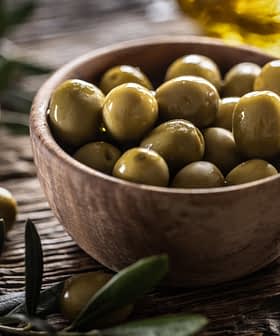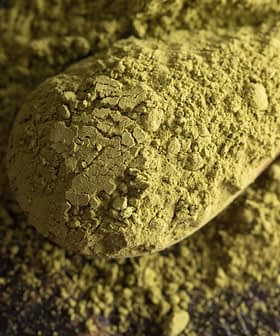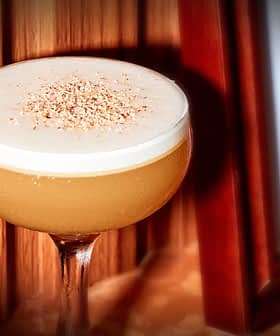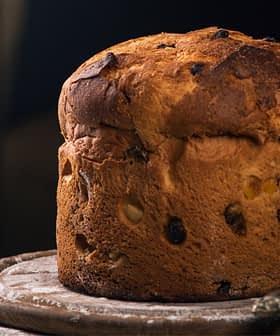Olives Go Sweet
In Italy, pastry chefs and producers are utilizing certain sweet olive oil varieties to create unexpected festive treats, despite the traditional emphasis on bitterness and pungency in high-quality extra virgin olive oil. Chefs like Luca Montersino and Pietro Macellaro are incorporating olive oil and olives into desserts, such as Panettone and chocolate cookies, to create unique and delicious treats that highlight the sweet and delicate flavors of these olive oil varieties.

In Italy, pastry chefs and producers are exploiting the sweet character of certain olive oil varieties to make unexpected festive treats.
Experts and producers make great efforts to explain that bitterness and pungency are some of the main features to look for in a high quality extra virgin olive oil. Beside being indicators of the oil’s polyphenol content, these features often bare witness to an early picking that ensures the best sensorial and nutritional profile for extra virgin olive oil.
Still, there are some specific varieties that — especially when fully ripened — have sweetness and delicacy as their core features, and this does not affect their inner qualities or the quality of the olive oil obtained by pressing them.
In Italy, the most common “sweet” varieties are Taggiasca in Liguria, Casaliva near the Garda lake, Raja in Latium, Cellina di Nardò in Apulia and Biancolilla in Sicily.
In recent years chefs, pastry-chefs and ice-cream makers discovered these peculiar characters and decided to attempt to use the most delicate olive oils to make delicious desserts and ice creams. Thanks to their brave efforts, the use of olive oil in the creation of cakes and sweets was thus “legitimized.” Now, in smart restaurants and cutting edge ice-cream parlors all over Italy, it’s not uncommon to find olive oil-based dessert treats.

One of the first pastry-chefs to extensively use extra virgin was Luca Montersino, founder of Golosi di Salute — a dedicated pastry brand with a special attention to health and to food intolerances. He often uses olive oil instead of butter to avoid lactose and animal fat. Montersino also was among the first to make a panettone – Italy’s favored Christmas delicacy – with the same technique.
Many others followed and sometimes they went even further, using not only olive oil but even olives themselves to prepare some original treats for the festive season and all year long. In Apulia, some years ago Andrea Serravezza and Massimo Gaetani (a chef and a food business expert) launched the registered trademark Olivotto®: an olive-based cream made using Cellina di Nardó black olives, a balanced amount of sugar and natural flavors. Cellina is a very interesting variety: its olives have a sweet taste with a light but clean hint of berries in the aftertaste that comes together with a lightly pungent touch. Cellina is also particularly suitable to be used in pastry-making thanks to the balanced ratio between acids, fats and sugars.
Currently there are three variations of Olivotto®: beside the Crema Dolce (sweet cream) that can be used in pastry making to flavor and give a light black color to doughs and sauces, there is also the sweeter Top Dressing to be used to dress ice-creams and desserts or to fill chocolates, and the Perle Noire (Black Pearl). These are whole, pitted olives in a sweet syrup that one can use to top or fill desserts or to add to dough for breads and cakes just like raisins or other dried fruits. The olives, Crema Dolce and Topping have a peculiar dark purple color that is a natural effect of the fruit’s ripening.

The talented Apulian pastry-chef Emanuele Lenti, owner at Pregiata Forneria Lenti in Grottaglie, then decided to use Olivotto® – both the cream and the olives – to make his Pan d’Olivotto, an original version of the traditional Panettone to which the fragrant yet not too sugary aroma of Cellina gives a unique and rich taste.
In Campania, half-hidden in the inner Cilento region, Pietro Macellaro is a young pastry-chef who decided to set up his “pastry atelier” right where the family’s farm stands, over the hills in the heart of the beautiful Cilento and Vallo di Diano National Park. Pietro uses the farm’s products to make his delicious desserts and pralines: almonds, raisins, apricots, chestnuts, cherries, aromatic herbs, local varieties of apple and peach and, of course, olives and olive oil. As the farm is quite high and it’s very cold at winter, they need no chemical additives or pesticides against the olive fruit fly.
“We have a certified organic olive grove of several local varieties,” he said, “and we just finished harvesting olives. This year the oil is particularly good and I can’t wait to use it for my sweets, beside bottling and selling it.” He uses extra virgin olive oil to make scrumptious chocolate cookies, and what he calls “half-dried black olives” to make a creamy ganache to fill dark chocolate pralines. Both are among the ingredients of his Panettone all’Olio Extra Vergine d’Oliva together with Manitoba flour, sugar, fresh eggs, buffalo butter, natural yeast and dark chocolate.









